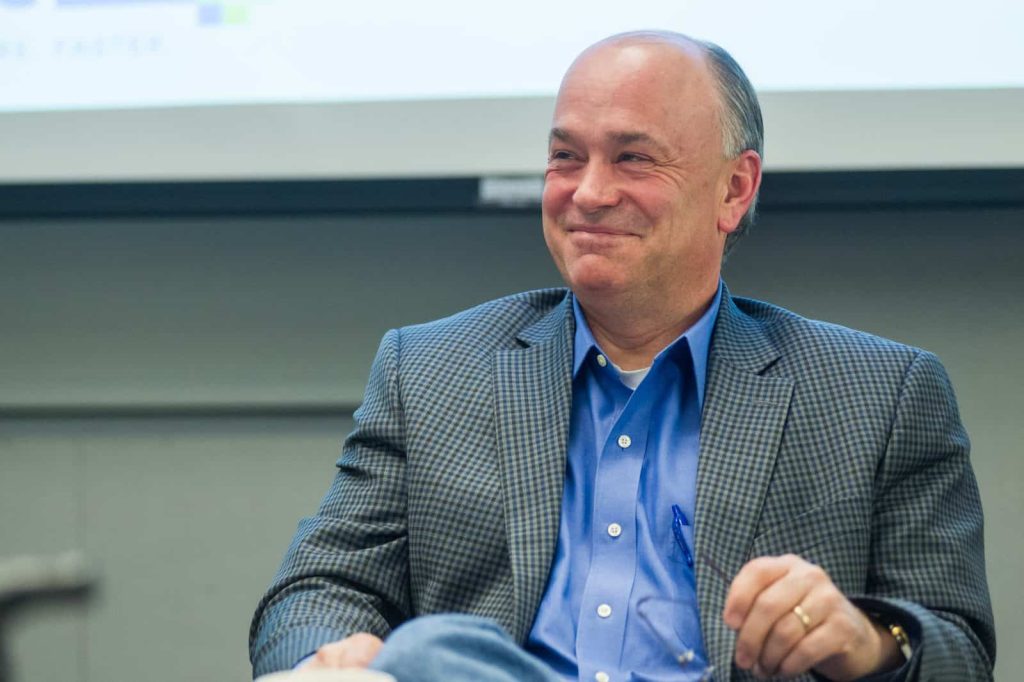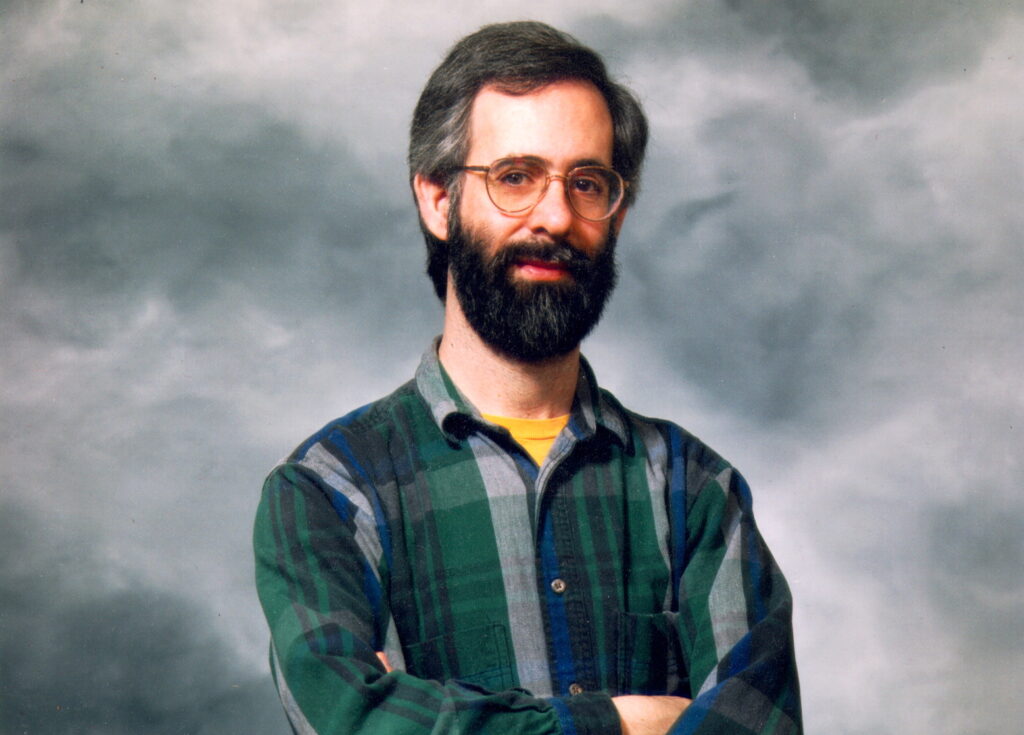Every day the world becomes more connected and data-driven. Intelligent building management systems and smart grids save energy while better and more capable robotics and autonomous vehicles promise to make life safer and easier. There are exponential opportunities to reshape industry boundaries in agriculture, healthcare, robotics, and advanced manufacturing, just to name a few industries.
We spoke with Jim Heppelmann, CEO of PTC, to get his thoughts on what the future holds and how Massachusetts is leading the way in smart protected devices and IoT.
Where do you think there are areas of opportunity for Massachusetts companies to lead?
Competition for the opportunities created by smart, connected products will occur across each layer of the technology stack, and Massachusetts is home to many of the key enabling technologies. For example, starting at the bottom of the technology stack with the Thing or product itself, we see some dramatic shifts. Products are now embedded with sensors, processors, software, and connectivity, and Massachusetts is the home for the three leading product design and development technologies in PTC, AutoDesk, and Dassault Systemes creating a foundation of expertise and talent. PTC has extended this foundation and expertise with our ThingWorx platform, which provides context for all the data generated by connected products and delivers that insight to transform how products are designed, operated and serviced.
Another opportunity for Massachusetts comes from the number of top universities. Historically, companies in the US conducted R&D primarily in its own facilities, but to manage costs and tap innovative ecosystems a transition began as companies realized they could shift R&D activities and their associated costs to universities. Today, it has been reported that about 75 percent of research in the US takes place on university campuses, creating a unique opportunity for companies in Massachusetts to tap these R&D ecosystems for innovation. PTC has long invested in and partners with the academic institutions that provide our customers and society with the next generation researchers, engineers, and entrepreneurs required for a connected world.
What are the biggest challenges now and in the foreseeable future for developing and deploying smart connected devices?
The challenge with smart, connected products starts with companies’ traditional operations and organizational structure. A manufacturer of smart, connected products is a cross between a software company and a traditional product company. This mix demands new skills, as well as new working styles, clock-speeds, and cultural norms. In addition, completely new and critical functions emerge—for instance, to manage and analyze all the new data. Manufacturers will have to hire experts in applications engineering, user interface design, and data scientists, which are all in high demand but short supply especially in traditional manufacturing centers.
The next challenge is defining and prioritizing which capabilities or use cases to enable. Smart, connected products dramatically expand the range of features and capabilities, but just because a company can offer many new capabilities does not mean that the value to customers exceeds their cost. And when companies get into a features and capabilities arms race, they end up blurring strategic differences and creating zero-sum competition.
Once the strategy has been set, an ongoing challenge will be security. Smart, connected products share some familiar vulnerabilities with IT in general, however these products have major new points of vulnerability, the impact of intrusions can be more severe, and because the products themselves often have limited processing power, they cannot support modern security hardware and software. The job of ensuring IT security must cut across all business functions, and risk models must consider threats across the device, the network to which it is connected, and the product cloud.
How do you see the use of data influencing future innovations or sector growth?
Data is growing – particularly for manufacturers and users of smart connected products and sensors making up the Internet of Things (IoT). Each sensor is potentially recording millions of points, and extracting value from data is the new strategic differentiator.
To do so, we need to combine data from sensors and Things with data from control systems, data from IT systems like MES or CRM, and data from product development systems like CAD and PLM to create a 360-degree view of the connected product or asset. Now that we have the full context we can use analytics and simulations to synthesize an understanding of what is going on, and we can deliver that insight in new applications.
If there will be billions of connected things in the world, every company will be affected in many ways, so we’ll need millions of new applications to address all of the different settings and role players. Creating new applications is the key, and PTC’s focus has been to make all of this easy so that domain experts coming from the business rather than from IT can quickly develop the applications that unlock the tremendous value opportunity of the IoT.
That opportunity comes in two flavors. First, data will improve the efficiency of existing operations across industries. For example, monitoring a fleets of vehicles allows service departments to stage service parts, predict maintenance needs, and increase the efficiency of field technician repairs.
Data will also create new services or even new businesses that disrupt existing industries. Data about driving conditions or delays gathered by a fleet of vehicles could be valuable to other drivers, to the operators of logistical systems, or to a cities road repair crews. As we have seen with Uber, data about underutilized vehicles and the location of individuals with transportation needs has disrupted the taxi business.
What legislative policies are having the biggest impact on IoT and other connected devices like self-driving cars, etc. and why?
Governments and other regulatory bodies are quickly instituting a variety of unique and complex regulations that can instill more confidence in the market, but can also impede companies’ ability to create value.
Several policies are around the level of security protocols and protection required in order to legally offer the product in the market. For example, the FDA instituted guidelines for increased security protection to be designed into medical devices including layered authentication levels and timed usage sessions that ensures appropriate amount of time in network connectivity. Other policies have focused on the data, and attempt to define who has ownership rights of the data generated by the product/user. For example, the EU’s General Data Protection Regulations limits the use of any data associated with a ‘natural person,’ which includes data collected from a product operated by a person.
On the other end of the spectrum, some governments are offering incentives to drive innovation and investment. In October, the Department of Electronics and Information Technology in India invited public opinion on how to improve a draft policy to create an IoT ecosystem in the country. The objective of the policy is to create an IoT industry in India worth $15 billion by 2020 and to increase the connected devices from around 200 million to over 2.7 billion by 2020. The Innovation District is Boston’s initiative to transform 1000 acres of the South Boston waterfront into an urban environment that fosters innovation, collaboration, and entrepreneurship. GE’s recent announcement to move their corporate HQ’s to Boston, potentially the Innovation District, is a sign these inviting government policies are working.
What are you most excited about that you’re working on now?
The world today, has yet to achieve the full potential created by the convergence of the digital and physical worlds in the IoT, until now. Whereas the IoT brings data from the sensors and things in the physical world to the digital world, augmented reality brings that data and insights from the digital world and superimposes them on the physical world.
This is important because we have more data than ever, thanks to digital transformation initiatives, and the increasing number of connected things. But the way in which humans interact with data has changed very little in decades, and is distinct from the physical world around us. Augmented reality (AR) provides a new and powerful way for humans to consume and capitalize on all this data in the context of the physical world.
While AR has seen huge adoption in the consumer space to enable new marketing and gaming experiences like Snapchat filters, the real opportunity is in the enterprise to transform how companies market and sell, create, operate and service products. AR can be used to validate product designs, by comparing the digital design to the physical product, or to augment controls on products that otherwise don’t have any. The service opportunities for AR are also limitless, for example, a digital overlay includes predictive information about a product’s service needs and step-by-step repair instructions, service efficiency and effectiveness can increase dramatically.
PTC acquired the industry’s most advanced and widely adopted AR technology, Vuforia, to enhance our ThingWorx platform and not only enable the rapid development of desktop and mobile applications, but also AR experiences. This combination of IoT and AR is the is key to unlocking the value at the convergence of the physical and digital worlds.


